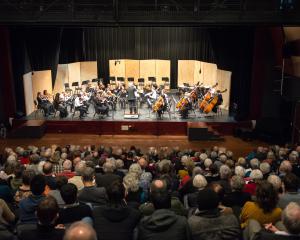
The evening opened with Mozart’s String Quintet No. 4 in G minor K516.
Mozart’s reputation rests on the delicacy of phrasing and intonation and a sharp awareness of the conversation between instruments.
The NZSQ always seems equal to his demands, as they are of the similar but rather more tempestuous nature of the closing work, Brahms’ String Quintet No. 2 in G Op. 111.
It seems a shame that Brahms is always introduced in terms of his bete noir, Beethoven.
Without that prejudice his charmingly simple honest sound could stand on its own merits.
The performance Brahms received was sublime, with the quintet sounding wonderfully unified and energised.
The middle position in the programme is traditionally set aside for a new work to introduce a new artist with an intriguing new sound.
However, when that sound is a world away from Brahms’ or Mozart’s, it risks doing neither it nor its companions any favours.
So, translating the sound of the natural world of the putorino into the manicured chamber music context is always going to present it as the outsider, working hard for acceptance.
A programme designed to initiate the ear for soundscapes would provide kindred company. However, this proviso aside, Salina Fisher’s commissioned work Turino stands on its own merits.
Translating a work inspired by what can safely assumed to be the pre-colonial Maori sound world into that of a Western, albeit contemporaneous, world, risks losing its cultural relevance.
All the more credit to Fisher that Turino triumphs.
All credit also to the NZSQ for successfully conjuring the sound of the wind instrument, the putorino, via strings.
Turino is a highly evocative and enrapturing music.
NZSQ with guest
Glenroy Auditorium, Sunday, September 25











